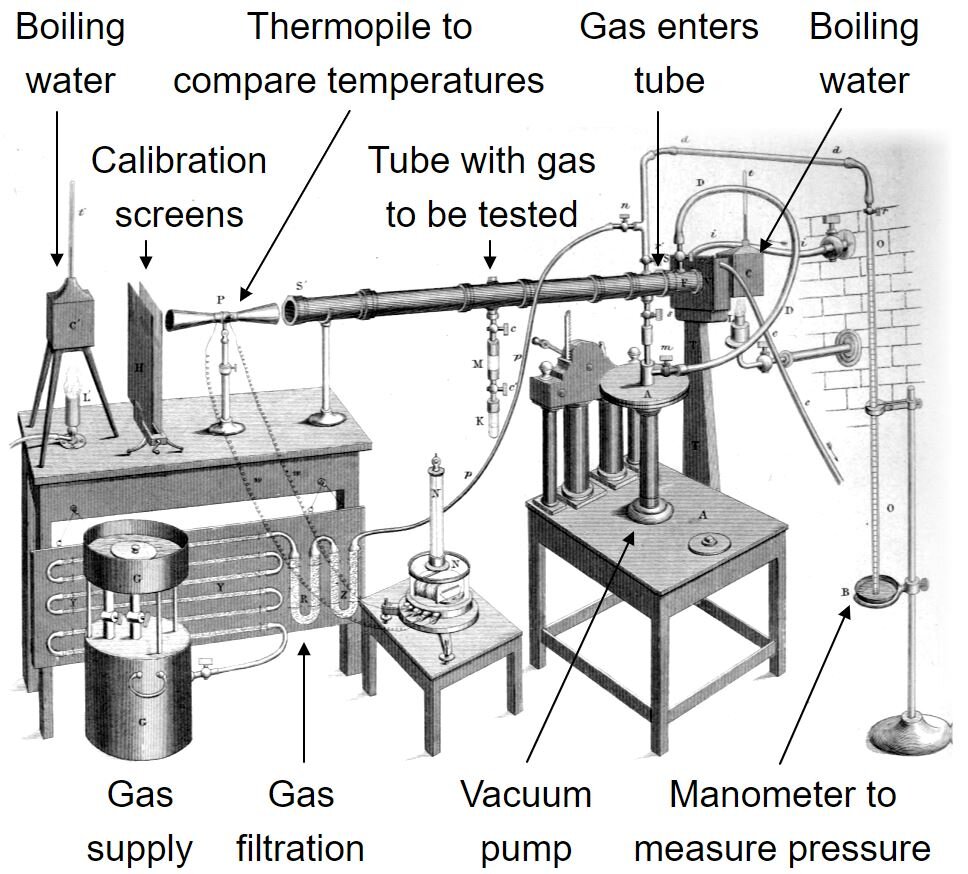Electric Cars: The Cheapest Way to Drive
In this post from the book net-zero:
When will electric cars become cheaper than gasoline? The physics of driving and why the total buying and running costs of electric cars are almost at parity and will end up 15% cheaper than their gasoline equivalents.
Will hydrogen cars ever catch on? Why I think the economics of hydrogen passenger vehicles don’t stack up.
In the jungle of claims and counterclaims surrounding electric vehicles it can be hard to figure out who to listen to. We know electric cars enable a net-zero transition because they have no tailpipe emissions and can eventually be manufactured and run on zero carbon electricity.
But at what cost?
Well we can figure this out with some basic physics and a few simple cost assumptions (don’t worry it’s nothing more than the stuff you learnt at high school).
The first step is to calculate the energy consumption of a theoretical car.
The two main energy uses in driving are 1) accelerating from standstill and, 2) overcoming air resistance when moving. All that we need to estimate both of these numbers is the formula for kinetic energy (remember that one!)
So the formula tells us that accelerating an average 1,500 kg car from standstill to 14 metres per second (30 mph) uses 127,000 joules of energy or 0.04 kWh. Assuming 4 stop-starts per mile during city driving and acceleration will use 0.16 kWh of energy per mile.
Next air resistance - this one is a little trickier. Once the car is moving at a constant speed, it must push a tunnel of air out of the way. The volume of air moved per mile is the front area of the car (3 square metres) times the distance travelled (1,600 metres or 1 mile) times the drag coefficient (0.33). Multiply this tunnel of air by the density of air (1.3 kg per m3) and you have the mass which must be moved: it equals about 2,000 kg of air per mile.
So plug a mass of 2,000 kg into our formula and we can calculate that when driving at a speed of 14 metres per second (30 mph) it requires 174,000 joules or 0.05 kWh of energy per mile to overcome air resistance.
In total our 1,500 kg theoretical car should consume about 300,000 joules or 0.21 kWh of energy during urban driving.
Now let’s see how that compares to some real cars:
Internal Combustion Engines
Modern gasoline cars have a fuel economy of about 40 miles per gallon, the equivalent of 0.81 kWh combustion energy per mile – four times greater than our theoretical car. Why? Well..
Gasoline engines are only 25% efficient.
Our 0.21 kWh of energy is used to move the car each mile, the other 0.6 kWh is wasted as heat and noise from the engine.
A basic gasoline car costs $20,000 of which $2,000 is the engine. The average car will last 15 years and drive 12,000 miles per year with an average of 2 passengers. Based on the costs, fuel efficiency, gasoline price, and a 3% discount rate, the levelised cost of buying and running a gasoline car is about $10c per passenger-mile ($7c buying cost, $3c fuel costs).
It seems like internal combustion engines are very inefficient (25-30%), so why do we use them? Well because gasoline and diesel liquids can pack so much energy into a small space (10,000 kWh per m3) just one tank of fuel can propel a car over 500 miles.
The challenge for an alternative technology is providing the required range for the vehicle without adding too much weight, volume, and cost to the car.
Enter the Electric Vehicle (EV)
Roll back 120 years and the dominance of the combustion engine vehicle was less than certain. Electric cars had come to market in the 1890s and, by the turn of the century, were outselling their gasoline counterparts.
Electric cars were the vehicle of choice for many city drivers with no vibration, smell, difficult gears, or noise; and car charging networks were being built up in big cities like New York by the Edison Company.
But Ford’s pioneering mass manufacturing techniques for the Model T dramatically reduced the cost and refined the performance of gasoline powered vehicles. Electric innovation couldn’t keep pace and it has taken a century for competitive electric vehicles to resurface.
The modern electric car replaces the internal combustion engine with a lithium ion battery used to drive electric motors which are over 90% efficient, with very little waste heat or noise; moreover, some of the energy usually lost during braking can be redirected to re-charge the battery.
A Tesla model 3 uses around 0.3 kWh per mile (120 mpg equivalent) which equates to around 75% efficient compared to our theoretically perfect car and three times better than a modern gasoline equivalent.
Despite the better efficiency, the biggest economic hurdle for electric vehicles is the upfront cost of the battery. Average lithium ion battery packs cost around $150 per kWh storage today (though some are closer to $100).
So if we want a car which can drive 300 miles on a single charge then we need 90 kWh of battery storage (300 x 0.3) which costs $13,500 (compared to a $2,000 combustion engine), weighs 500 kg and takes up over 300 litres of space. The levelised cost of buying and running an equivalent electric vehicle today is around $12c per passenger-mile or 20% more than our gasoline car.
However, battery costs are dropping by 30% every time production doubles - this is called the experience curve. So once fully scaled-up the price of battery storage should trend towards $50/kWh (or so) and the battery pack will cost just $4,000 per car (just $2,000 more than a combustion engine). This takes the levelized cost of buying and running an electric car to $8.5c per passenger-mile ($7.5c buying cost, $1c running cost) or 15% cheaper than the equivalent gasoline car.
For drivers that do a lot of miles, or where fuel is more expensive, electric will already be cheaper today. For everyone else, electric cars will likely reach cost parity with gasoline over the coming few years before becoming the cheapest way to drive.
*Fuel Cost Assumptions (with distribution costs/retail): Gasoline $6.3c/kWh ($2.3/gallon), Electricity $10c/kWh, Hydrogen $7c/kWh ($2.3/kg)
Electric cars emit less carbon today but more importantly they enable net-zero
Tailpipe emissions of electric cars are zero. But of course electricity mostly comes from fossil fuels today and battery production also adds ~3 tonnes of embedded CO2 emissions into the car production.
Our average electric car, driving 12,000 miles per year, will emit 1.5 tonnes of CO2e if run on today’s grid electricity (500g CO2 per kWh globally). This compares to the a new/efficient gasoline car which will emit 2.5 tonnes of CO2e per year. The electric vehicle will have made up for higher production emissions (with lower running emissions) in 3 years and over the life of the vehicle will save >13 tonnes of CO2.
Electric vehicles already generate less CO2 in nearly every region of the world today, but importantly, battery electric vehicles (BEV) offer a mode of transport for cars, vans, and small trucks which can efficiently use renewable electricity rather than oil - facilitating a shift to a zero carbon economy.
Running out of battery (range anxiety) and lack of charging infrastructure are near term hurdles to wider adoption, but the increasing range of vehicles and increasing numbers of charging points (which add just $0.2c per p-mile) are addressing these concerns. I would expect battery electric vehicles to become the dominant technology for cars, vans, and small trucks over the coming years.
Hydrogen Fuel Cell Passenger Cars - The Economics Don’t Stack Up
Fuel cell vehicles use stored hydrogen mixed with atmospheric oxygen to produce electricity and water. The electricity is used to charge a small battery and drive an electric motor. Hydrogen fuel cell vehicles offer a route to zero carbon by using hydrogen made from the electrolysis of water (green hydrogen). But ultimately hydrogen technology will always be less efficient than electric because 1) the electricity must be converted to hydrogen (electrolysis is ~65% efficient), and 2) compressed (93% efficient), then 3) run through a fuel cell (50% efficient). Rather than used directly in a battery/electric motor (75% efficient).
Hydrogen fuel cells cost $50 per kW power today and hydrogen storage tanks costs $15 per kWh. A standard 150 horsepower or 110 kW car with enough storage to drive 300 miles requires $10,000 of power and storage equipment, replacing the $2,000 combustion engine or $13,500 battery.
That means the cost of a fuel cell vehicle driving today would work out at around $14c per passenger-mile (20% more than an electric car), and the cost at scale (assuming equipment costs halve) may end up at around $10c per passenger-mile (still 15% more than electric).
The use-case for hydrogen vehicles is for longer range cars and faster refuelling times. However, most users will end up charging their electric vehicles like they charge their phones – overnight. On the occasional longer trip they can use fast chargers while taking a rest break we already have batteries that can add hundreds of miles range in 15-30 minutes.
I suspect that fuel cell cars may become stuck in a chicken-egg scenario where the hydrogen refuelling stations are not built for lack of demand, but no one is buying hydrogen cars because there are very few filling stations. In the meantime we become accustomed to electric, which will prove the more economic option and one of the many reasons that the transition to net zero will create a 25% cheaper system.
For more on the fundamental physics of net-zero check out ‘Sustainable Energy Without the Hot Air’ by David MacKay in the bookshelf.





































